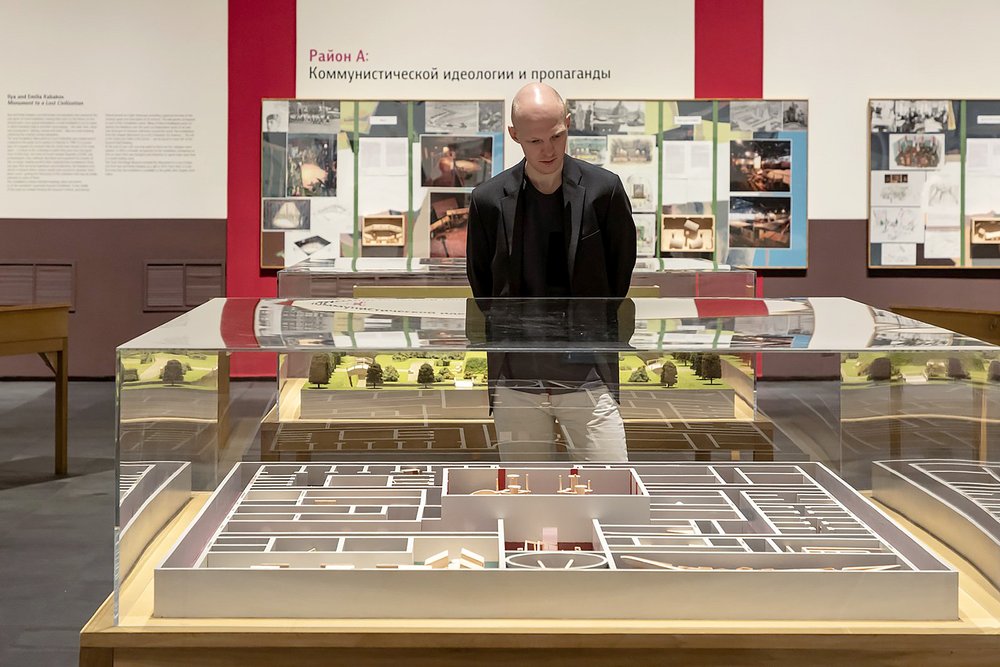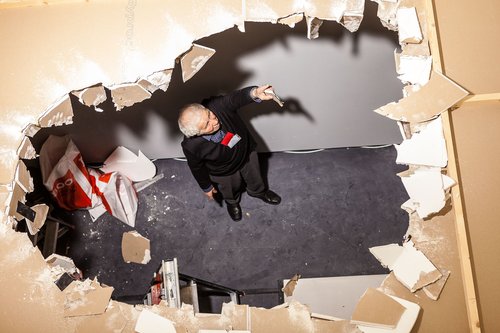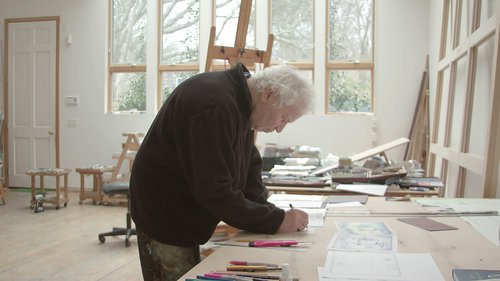The Kabakovs’ Monument to a Lost Civilisation Goes on View at the Hermitage

Ilya and Emilia Kabakov. Monument to a Lost Civilization. Exhibition view. St Petersburg, 2024. Courtesy of The State Hermitage Museum
An installation by Ilya and Emilia Kabakov conceived in the 1990s has been put on public display at the Hermitage in St Petersburg yet its message today looks different in the context of the tragic times we live in.
There have been numerous memorial exhibitions since the passing of Ilya Kabakov (1933-2023) last year: ‘Kabakov's Cabinet’ at the Van Abbe Museum in Eindhoven, ‘Tomorrow We Fly’ at the Museum of Fine Arts in Tel Aviv, and ‘Between Heaven and Earth’ at the Fondazione Querini Stampalia as part of the 60th Venice Biennale. More recently, a major installation by Ilya and Emilia Kabakov (b.1945) has just opened at the Hermitage in St Petersburg called ‘Monument to a Lost Civilisation’, which was first conceived by the couple back in the 1990s when they were living in New York.
The installation project takes the form of an entire museum which is designed to explain in great detail human existence on ‘one-sixth of the earth’ – the USSR - to an international audience. This installation had been planned during the construction of the new building in the Folkwang Museum in Essen in 1993-94, but was never realised, another addition to the long list of 20th century and Soviet failed utopias. The result is a meta-installation of thirty-eight spatial workscomprising 3D models and documentation which are assembled into seven sections, or urban neighbourhoods revealing various aspects of state, public and private life under socialism.
‘Monument to a Lost Civilisation’ was first shown in Palermo at Cantieri Culturali alla Zisa in 1999 and later in three museums across Australia, in Germany at the Kunsthallen in Hamburg and Frankfurt, in 2012 in Moscow at Krasny Oktyabr Chocolate Factory and in 2013 at the Van Abbe Museum in Eindhoven. In 2014, Ilya and Emilia Kabakov donated it to the Hermitage. This is its first public outing in the White Hall in the General Staff Building.
Ilya Kabakov was born in the Ukrainian city of Dnipropetrovsk (now Dnipro), enrolled in art school at the Repin Academic Institute, which was evacuated from Leningrad to Samarkand during the Second World War, and finally graduated from the Surikov Institute in Moscow. He embodies Soviet internationalism the result of the avant-garde project initiated by the 1917 Bolshevik revolution and many consider Kabakov to be ‘the last Soviet artist’.
One of the first group exhibitions dedicated to the phenomenon of Moscow Conceptualism in Europe, shown in Prague in 1995 and in Berlin in 1996, was called ‘Flight, Departure, Disappearance’, a troika of notions which define Kabakov’s work. Now that the artist has left us, the question arises - what is left? Posthumous exhibitions of Kabakov could be called ‘The Artist Is Absent’ by analogy with the sensational retrospective of Marina Abramovich (b. 1946), another international star who emerged from a country that survived the experience of ‘real socialism’.
Project curator Marina Shultz, head of the Contemporary Art Department at the Hermitage singles out the political dimension in the work of the Kabakovs which in the early days often caused a clash of opinion between opponents and supporters of the communist experiment, and a division between the ‘right’ and ‘left’.
Externally, the architecture of the installation is a buried city surrounded by a concrete moat with a green hill, bridges, a park with benches and paths and is evocative of real world memorial projects like New York's Ground Zero designed by Michael Arad and Peter Walker or Berlin's Holocaust Memorial by Peter Eisenmann.
The image of the idyllic garden that conceals something like a bomb shelter underneath can bring a militarized reading to the installation ‘Monument to a Lost Civilisation’. Hypothetical visitors, who have enjoyed the traditional beauty in the halls of this classical museum, and want to wander and relax in nature, find themselves in a lifeless space, immersing themselves in Soviet reality recreated in Kabakovs’ art. Most of the works, thirteen installations, among them the well-known ‘Toilet in the Corner’ and ‘The Man Who Flew into Space from His Room’ are devoted to communal life typical for the Soviet masses. Among other sections, two more stand out ‘Hospitals and Scientific Research’ and ‘Museums and Education’. It is in these fields that the kind of socialism which was built in the USSR retained the original avant-garde features of the ‘enlightenment project’.
Ilya and Emilia Kabakov saw the Soviet past as ‘civilisation’, but the line between that and imperial aspirations can be too thin. Mikhail Piotrovsky, the director of the Hermitage and an enthusiastic supporter of contemporary imperial ideology and the current policy of the Russian authorities, places the emphasis thus: "Imperial Russia was succeeded by Soviet civilisation, and it was succeeded by the new sovereign Russia. The Soviet Russian civilisation became part of history, and therefore we can talk about it with nostalgia, recalling how personal dreams and social utopias, petty but moving everyday life and flights into space, and finally meetings with angels come together". In the wake of the 24th February 2022, Ilya and Emilia Kabakov quickly issued a joint public statement asking to be considered international (rather than Russian) artists. The installation will be on view at the Hermitage until June 2025 and in the current historical situation, which is unpredicable and can change quickly, the meaning of the exhibition itself might evolve. This ‘vanished civilisation’ might either disappear forever, or might be reborn in the most unpredictable of new forms, to which is keeps striving in full view of the rest of the world.
Ilya and Emilia Kabakov. Monument to a Lost Civilization
St Petersburg, Russia
3 July, 2024 – 1 June, 2025














